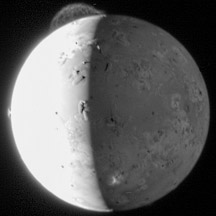Click on image for full size
Image courtesy of NASA/Johns Hopkins University Applied Physics Laboratory/Southwest Research Institute.
The Poles of Io
Io is a large moon of Jupiter. Jupiter has four large moons. Io is the closest of the four to Jupiter. Io has hundreds of volcanoes. It has more active volcanoes than any place else in our Solar System. Some of those volcanoes are near Io's poles.
A volcano named Tvashtar is near Io's North Pole. Two different spacecraft have "seen" Tvashtar erupting. The Galileo spacecraft spotted a huge lava lake in the volcano's crater. It also took pictures of an eruption of a huge lava "curtain". The curtain was 25 km (16 miles) long and at least a kilometer (three thousand feet) high! The New Horizons spacecraft also took pictures of an eruption from Tvashtar.
Another volcano, named Dazhbog, is also pretty close to Io's North Pole. The Voyager spacecraft took pictures of Dazhbog. So did the Hubble Space Telescope. Dazhbog is named after a god from Slavic mythology. Tvashtar is named after the Hindu god of blacksmiths.
Io has a very thin atmosphere. It is mostly sulfur dioxide gas from the volcanoes. Jupiter has a huge magnetic field with lots of radiation trapped in it. Some of that radiation hits Io's atmosphere. It makes gases in the atmosphere glow. That glow is called the aurora. It is like our Northern Lights or Southern Lights on Earth. The aurora on Io is strange. It is at Io's equator, NOT at its poles!
You might also be interested in:

The Galilean satellites are the 4 big moons of Jupiter, Io, Europa, Ganymede, and Callisto. These moons are called Galilean because they were discovered by Galileo Galilei in 1610. In this picture, Io,
...more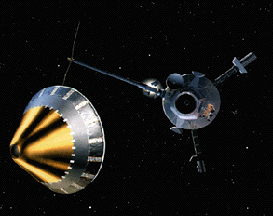
Galileo was a spacecraft that orbited Jupiter for eight years. It made many discoveries about Jupiter and its moons. Galileo was launched in 1989, and reached Jupiter in 1995. The spacecraft had two parts.
...more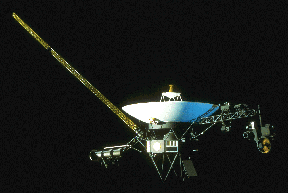
Unexpected discoveries made by the two Voyager spacecrafts during their visits to the four largest planets in our solar system have changed the field of space science. Voyager 2 was launched on Aug. 2
...more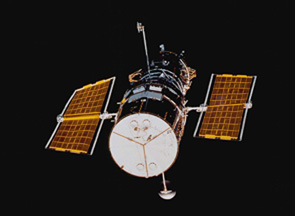
The Hubble Space Telescope (HST) is really neat! It was first launched in 1990, but scientists started building it in the 1970's! We have found all kinds of objects like stars, nebulae and galaxies. The
...more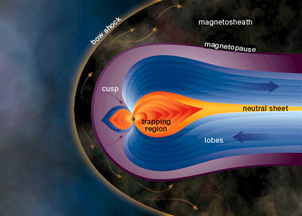
Jupiter's magnetosphere is very special. It is the biggest thing in the entire solar system. Not only is it big enough to hold all of Jupiter's moons, but the sun itself could fit inside. It goes all
...more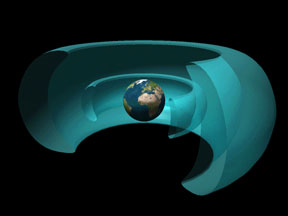
Text for this level has not been written yet. Please see the "Intermediate" text for this page if you want to learn about this topic. To get to the "Intermediate" text, click on the blue "Intermediate"
...more
Amalthea was discovered by E Barnard in 1872. Of the 17 moons it is the 3rd closest to Jupiter. Amalthea is about the size of a county or small state. Amalthea is named after the goat in Greek mythology
...more


